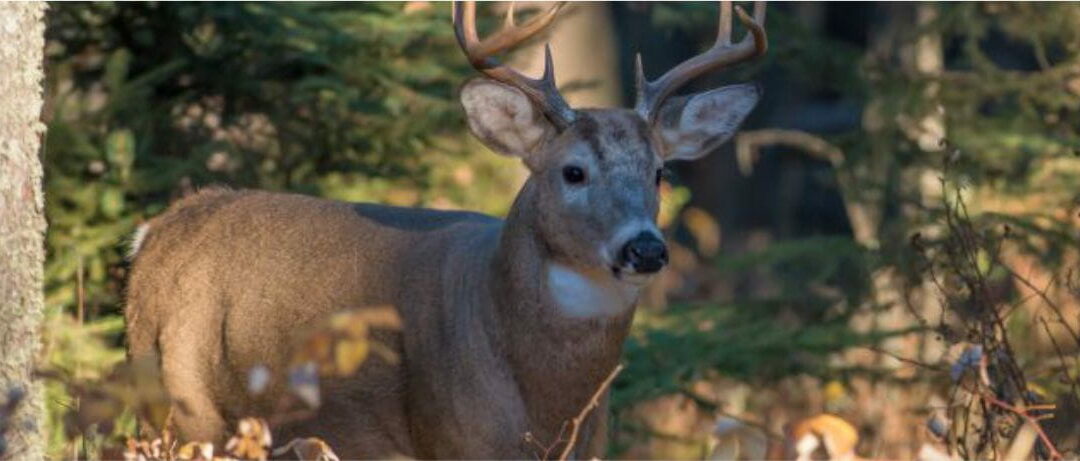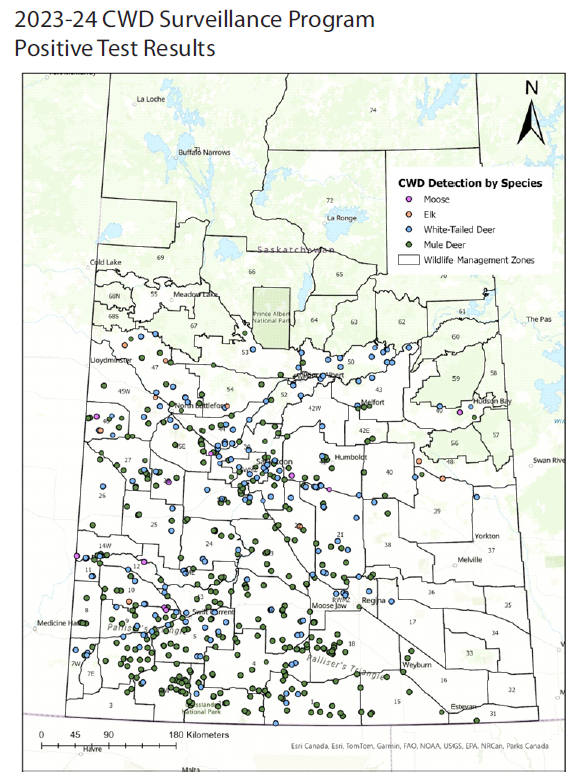The 2023–2024 chronic wasting disease surveillance results are now posted on the Government of Saskatchewan’s website.
Chronic wasting disease (CWD) is a fatal and infectious disease. It can be found in deer, elk, reindeer, and moose. CWD affects the central nervous system of animals and has no known cure or treatment. Caribou are a subspecies of reindeer in Canada and can likely be affected by CWD.
The program has detected 525 positive cases in the province, and that includes 363 mule deer, 148 white-tailed deer, six elk, and eight moose.
The cases were detected through the hunter surveillance program. The province is broken up into wildlife management zones. One zone is on the forest fringe, and the detection of CWD in this area is of concern because that would mean it could affect the animals in the boreal forest.
“In the southern half of the province, from the boreal forest/PA area down to the south, we have CWD positive detections throughout that area,” said Ministry of Environment Fish and Wildlife Health Biologist Ruth Aschim. “The highest areas where we have the highest prevalent rates are in the south-west and west central parts of the province. We are seeing high prevalence rates in the mule deer and, to a lesser extent, in the white-tailed deer, but there is quite a bit of variation across the landscape, and it is widely distributed across the landscape, the positive CWD detections that we are finding.”
An infected animal can appear healthy for several years before signs are present in the animal. Some signs that can show in late stages are weight loss, poor coordination, and other changes in body and behavior.
“We do typically have lower sample submissions from the northern wildlife management zones, like the forest fringe all the way up north. So, for the Prince Albert Area, I would encourage hunters in the north to please submit their samples for CWD testing just so we can get more data from that area and have a more accurate understanding of where the disease is distributed on the landscape and what the prevalence rates are,” explained Aschim.
For more information about CWD, including how to submit your animal for testing, visit saskatchewan.ca/cwd.
(Photos courtesy of Saskatchewan.ca)

